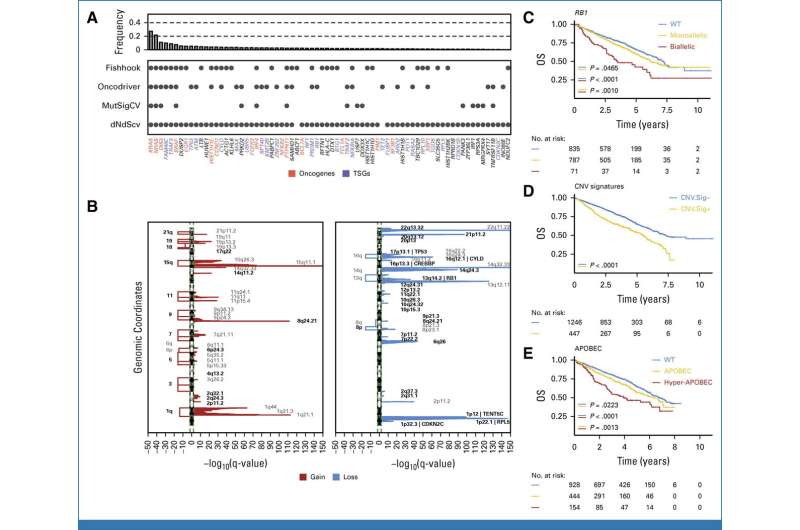This article has been reviewed according to Science X's editorial process and policies. Editors have highlighted the following attributes while ensuring the content's credibility:
fact-checked
trusted source
proofread
First individualized predictive model for multiple myeloma treatment

Multiple myeloma remains challenging to treat. New therapeutic advances have improved outcomes, but selecting the right treatment for a patient can be complex because the disease can vary drastically from person to person. In a new article published in the Journal of Clinical Oncology, Moffitt Cancer Center researchers in collaboration with Sylvester Comprehensive Cancer Center and groups around the world share results from a novel model that can provide tailored predictions of how individual patients respond to different therapies.
Multiple myeloma is a rare blood cancer affecting a type of white blood cells known as plasma cells. There is no cure for the disease, which is why therapeutic management is critical. To help determine the appropriate course of therapy, clinicians utilize prognostic tools including fluorescence in situ hybridization (FISH), which maps out cell genomic changes and gene expression profiling models. But as lead study author Ken Shain, Ph.D., M.D., explained, those tests are limited.
"The FISH and gene expression tests are important, but they don't account for patient-to-patient variability and ignore several prognostically relevant genomic and time-dependent features that could help physicians determine the best treatment strategy to boost overall patient survival," said Shain, co-leader of the Pentecost Family Myeloma Research Center at Moffitt.
A team of Moffitt researchers and collaborators in the U.S., United Kingdom, Germany, and Italy developed a novel genomic classification system for multiple myeloma that categorized patients into 12 distinct groups based on their underlying genomic profiles. First, they assembled a clinical, demographic, genomic, and therapeutic dataset from nearly 2,000 newly diagnosed multiple myeloma patients.
The researchers then performed extensive genomic profiling using advanced sequencing techniques, allowing them to identify recurrent genomic features and mutations associated with the disease. The result was the individualized risk model in multiple myeloma or IRMMa. The predictive model uses advanced statistical methodologies such as deep neural networks to generate individualized overall survival and event-free survival predictions for multiple myeloma patients.
Rigorous validation of the IRMMa model using independent datasets was performed to ensure its accuracy and reliability in diverse patient populations. Additionally, the researchers analyzed treatment outcomes and variance among different therapeutic regimens, aiming to identify optimal treatment approaches tailored to individual patient characteristics.
"To our knowledge, this is the first individualized prediction model able to incorporate heterogeneous clinical and genomic information to predict an individual patient's response to given treatment options," Shain said.
The researchers note IRMMa has limitations, but it is a flexible, knowledge-driven model that can be adapted over time to add new genomic drivers and therapies.
More information: Francesco Maura et al, Genomic Classification and Individualized Prognosis in Multiple Myeloma, Journal of Clinical Oncology (2024). DOI: 10.1200/JCO.23.01277


















